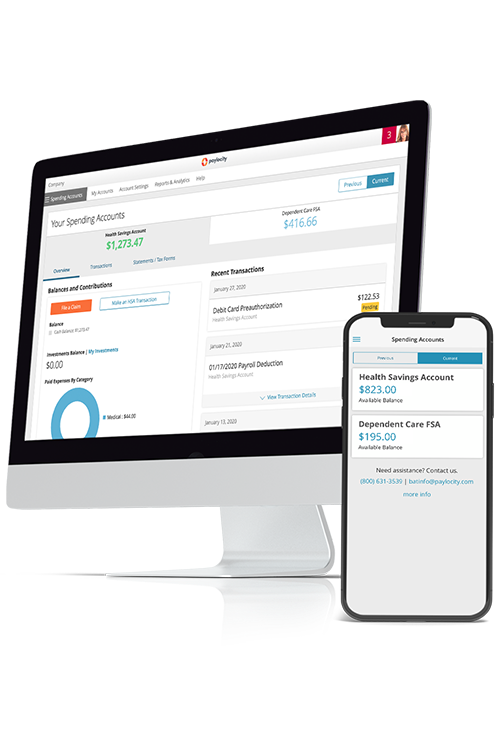
Comparing 2025 Paid Sick Leave Laws by State
Not all states require employers to provide paid sick leave, but mandates vary across the ones that do. Learn these legal nuances and requirements.
What is Paid Sick Leave?
Paid sick leave is a benefit that lets employees continue to receive their regular pay while taking time away from work for an illness or injury. Depending on an employer’s sick leave policy, paid sick time is often an additional benefit offered alongside vacation days or generalized paid time off (PTO).
No federal law currently requires employers to provide sick leave or maintain an illness leave policy. The Family and Medical Leave Act (FMLA), though, does require eligible employers to provide up to 12 weeks of unpaid sick leave for certain medical situations affecting an employee or their immediate family member.
Instead, state and local governments administer paid sick leave laws and mandates. As of January 1, 2025, the District of Columbia (DC) and 19 states listed below have paid sick leave laws, though several municipalities across the U.S. have passed similar local ordinances.
Note: The below information was last updated December 30, 2024. It is not intended as legal or tax advice.
Key Takeaways
- As there is currently no federal mandate, states and municipalities administer paid sick leave laws.
- Paid sick leave requirements and acceptable uses vary by governing body, complicating compliance for multi-state (and some single-state) employers.
- Commonly accepted uses include obtaining a medical diagnosis, receiving preventative or routine medical care, and handling an existing health condition (e.g., mental or physical illness or injury).
Sick Leave Payout
As of 2025, no state or local jurisdiction requires employers to pay out unused paid sick leave when an employee separates from the organization. However, Nevada, Maine, and Illinois (along with Chicago and Cook County) have general paid leave mandates that may contain wage payment requirements applying to paid leave payouts.
Acceptable Paid Sick Time Uses
The eligible reasons for using a sick day vary by jurisdiction. Still, employees can generally use paid sick days for any of the following:
- Handling an existing health condition, including mental or physical illness, injury, or medical condition, for themselves or an immediate family member
- Obtaining a medical diagnosis, care, or treatment (including home care) for any of the above
- Receiving preventative or routine medical care for themselves, including pregnancy, childbirth, prenatal visits, postpartum care, and dental visits
- Abiding a public health official’s order or public health emergency that closed the employee’s place of business
- Requiring time off to seek legal or law enforcement assistance for themselves, an immediate family member, or a family member’s dependent experiencing domestic violence, a family offense matter, harassment, sexual assault, sexual abuse, stalking, or human trafficking
Employers should refer to any applicable state or local sick leave laws for a complete list of acceptable uses.
Legal Nuances and Best Practices
The varying legal requirements across state and local mandates can create a complex set of nuances for single-state and multi-state employers to consider when creating a sick time policy, such as:
- Carryover requirements
- Probationary periods
- Use and accrual limits
- Reinstatement standards for rehired employees
Moreover, depending on whether the absence is due to the employee’s own needs or someone else’s, sick time requests may involve other federal or state laws, such as Paid Family and Medical Leave (PFML) programs or the Americans with Disabilities Act (ADA).
Due to this complexity, organizations should know and reconcile all federal, state, and local paid leave laws that may apply to a sick time off request from their employees. To ensure compliance, it’s best if employers also incorporate each law’s requirements into daily practices and policy development procedures.
Usually, sick leave policies equal to (i.e., meet every legal requirement) or more generous than what the law mandates will sufficiently cover unique legal nuances and overlapping standards. To implement effective solutions, employers should collaborate with a well-rounded team of stakeholders, including members from HR, legal, benefits, IT, payroll, and employee management.
Paid Sick Leave Laws by State 2025
|
State |
Employer Eligibility |
Employee Eligibility |
Accrual Rate |
Frontloading Allowed |
|---|---|---|---|---|
|
All |
Any employed by an employer (with limited exceptions) |
Yes |
||
|
Any that has at least one employee who works more than 30 days in a year within the state |
Any who works at least 30 days in the state |
Yes |
||
|
All |
All |
No |
||
|
All with one or more employees (tiered implementation until 1/1/2027) |
All |
Yes |
||
|
Any entity directly or indirectly employing or exercising control over the wages, hours, or working conditions of employment, including through use of temporary workers or a staffing agency |
Any employed by an employer (with limited exceptions) |
Yes |
||
|
All |
All full-time and part-time workers covered by the Paid Leave for All Workers Act (PLAWA) |
Yes |
||
|
Any who employs more than ten covered employees in the usual and regular course of business for more than 120 days in any calendar year |
All within the state, including full-time, part-time, and per diem employees |
Yes |
||
|
Any with 15 or more employees; those with fewer must provide unpaid sick and safe leave |
Any who works at least 12 hours or more per week (with limited exceptions) |
Yes |
||
|
Any with 11 or more employees; those with fewer may provide unpaid sick time |
Any full-time, part-time, temporary, seasonal, and other employees who primarily work within the state |
Yes |
||
|
All with at least one employee |
Any for whom employers are required to withhold federal income tax (with limited exceptions) |
Yes |
||
|
All |
Any who work at least 80 hours in a year for an employer within the state, including temporary and part-time employees |
Yes |
||
|
Any with 50 or more employees |
Any for whom employers are required to withhold federal income tax |
Yes |
||
|
All |
Any full-time, part-time, and temporary employees (with limited exceptions) |
Yes |
||
|
All private employers with at least one employee at any time |
Any who work at least 80 hours within a 12-month period, including full-time, part-time, and temporary employees |
Yes |
||
|
All with four or more employees within the US |
All (with limited exceptions) |
Yes |
||
|
Any with ten or more employees within the state |
Any full-time and part-time salaried, hourly, commissioned, and piece-rate employees, as well as home care employees who provide hourly or live-in care to the elderly or disabled and receive money from the state’s Department of Human Services |
Yes |
||
|
Any who has 18 or more employees |
All full-time and certain part-time employees (with limited exceptions) |
Yes |
||
|
All |
All full-time and certain part-time employees (with limited exceptions) |
Yes |
||
|
All who employ home health workers |
All home health workers who work at least 20 hours a week or 90 hours a month |
Yes |
||
|
All |
All, including seasonal or domestic workers, independent contractors, workers for certain construction employers, and immediate family members of the business owner |
Yes |
*Some or all of the listed information will go into effect on February 21, 2025.
Paid Sick Leave Laws by Municipality
Most, but not all, of the following local sick leave laws have a corresponding statewide law. For example, Philadelphia, Pittsburgh, and Allegheny County have sick leave laws, but the state of Pennsylvania doesn’t.
Employers should check with any applicable local agencies for a more exhaustive list of requirements.
|
Municipality |
Employer Eligibility |
Employee Eligibility |
Accrual Rate |
Frontloading Allowed |
|---|---|---|---|---|
|
Berkeley, CA |
Any within city limits |
Any who work two hours in a workweek in the city and are entitled to minimum wage |
No |
|
|
Emeryville, CA |
Any within city limits |
Any who work two hours in a workweek in the city and are entitled to minimum wage |
Yes |
|
|
Los Angeles, CA |
Any within city limits |
Any who work two hours in a workweek in the city and are entitled to minimum wage |
Yes |
|
|
Oakland, CA |
Any within city limits |
Any who work two hours in a workweek in the city and are entitled to minimum wage |
Yes |
|
|
San Diego, CA |
Any within city limits |
Any who work two hours in a workweek in the city and are entitled to minimum wage |
Yes |
|
|
San Francisco, CA |
Any within city limits |
Any who perform work in the city for at least 56 hours during a calendar year. |
Yes |
|
|
Santa Monica, CA |
Any within city limits |
Any who work two hours in a workweek in the city and are entitled to minimum wage |
Yes |
|
|
West Hollywood, CA |
Any with one or more employees in the geographic boundaries of West Hollywood |
Any who, in a particular week, works at least two hours within the boundaries of the city for an employer and qualifies as an employee entitled to minimum wage under the California Labor Code and wage orders published by the California Industrial Welfare Commission |
Yes |
|
|
Chicago, IL |
Any that employ at least one “covered employee” in the city limits |
Any who performs at least 80 hours of work for an employer in a 120-day period while being physically located within the geographic boundaries of the city, including domestic workers or individuals who travel within the boundaries of the city on compensated time |
Yes |
|
|
Cook County, IL |
All within the county limits (except Chicago) unless the local municipality has opted into the state’s Paid Leave for All Workers Act (PLAWA) or has an equivalent ordinance. |
All who work for an employer within the county limits and/or an employer with a place of business within the county limits, including domestic workers |
Yes |
|
|
Montgomery County, MD |
Any that employs one or more people within county limits (and the owner), including the county government but not federal, state, or any other local governments |
Any who works nine hours or more each week |
Yes |
|
|
Bloomington, MN |
Any individual, corporation, partnership, association, nonprofit organization, or group of people in the city limits |
Any individual who performs 80 hours of work for an employer in a calendar year while being physically located in the city limits, regardless of the employer’s location |
Yes |
|
|
St. Paul, MN |
All with at least one employee within city limits |
All full-time, part-time, and temporary employees who work 80 hours in a calendar year |
Yes |
|
|
Duluth, MN |
Same as state requirements |
Same as state requirements |
Same as state requirements |
|
|
San Bernalillo County, NM |
All within county limits |
Any who performs at least 56 hours of work within the county limits |
Yes |
|
|
New York City, NY |
All with five or more employees within city limits |
All full-time, part-time, and seasonal employees working within city limits (including boroughs) |
Yes |
|
|
West Chester County, NY |
Same as state requirements |
Same as state requirements |
Same as state requirements |
|
|
Philadelphia, PA |
All with ten or more employees within city limits |
Full-time and part-time employees who work 40 hours in a year within city limits |
Yes |
|
|
Pittsburgh, PA |
All within the geographic boundaries of the city |
Full-time and part-time employees who work within city limits |
Yes |
|
|
Allegheny County, PA |
All with 26+ employees within county limits |
Any located within county limits |
Yes |
|
|
Seattle, WA |
Any within city limits |
Almost all within the city limits |
Yes |
|
|
Tacoma, WA |
Same as state requirements |
Same as state requirements |
Same as state requirements |





